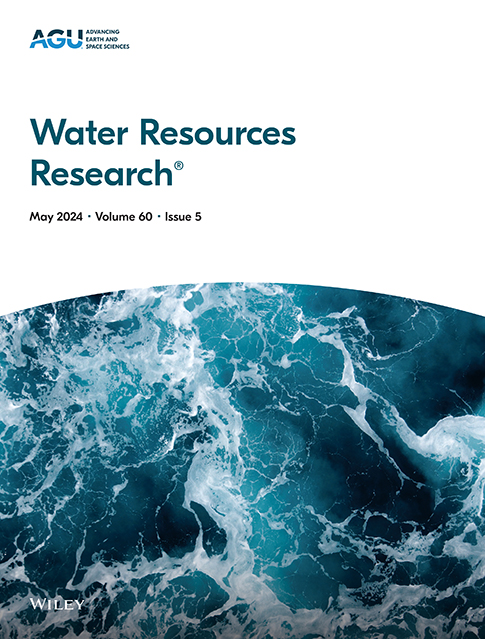The Response to Hydrological Regime Change of Nitrogen Transformation Processes at the Sediment-Water Interface of Seasonal Floodplain Lakes: Insights From the Yangtze River-Poyang Lake System
IF 4.6
1区 地球科学
Q2 ENVIRONMENTAL SCIENCES
引用次数: 0
Abstract
Poyang Lake, the largest freshwater lake in China and a globally significant wetland, is intricately connected to the hydrological dynamics of the Yangtze River via a complex river-lake exchange system. This system generates to unique seasonal fluctuations, forming a distinctive seasonal lake system, which influences hydrological and hydrodynamic processes across floodplains. Recent years have witnessed significant alterations in the hydrological patterns of the Yangtze River, notably in water levels, thereby impacting the nutrient dynamics such as nitrogen transformation at the sediment-water interface of Poyang Lake. This study establishes a coupled model integrating hydrodynamics and nitrogen transformation to elucidate the impacts of the hydrological regime of Yangtze River on nitrogen transformation in Poyang Lake after the operation of Three Gorges Dam. Findings reveal spatiotemporal variations in both hydraulics and nitrogen transformation within the seasonal lake system. Notably, the recharge rate between surface water and groundwater experiences a substantial shift, surpassing 60%. Furthermore, the nitrification rate at the sediment-water interface escalates by 28.5%, and the denitrification rate increases by 21.3% owing to pronounced alterations in the hydrological regime. However, this intensified transformation does not translate to enhanced efficiency, as the nitrogen transformation efficiency declines to 72.3% of its original rate. This research provides a theoretical framework for understanding the ecological and environmental impacts of human interventions on Poyang Lake and highlights the implications for managing other floodplains and seasonal lakes globally, such as lakes on floodplains of Amazon River and Mekong River, which face similar challenges in hydrological dynamics and ecosystem health.求助全文
约1分钟内获得全文
求助全文
来源期刊

Water Resources Research
环境科学-湖沼学
CiteScore
8.80
自引率
13.00%
发文量
599
审稿时长
3.5 months
期刊介绍:
Water Resources Research (WRR) is an interdisciplinary journal that focuses on hydrology and water resources. It publishes original research in the natural and social sciences of water. It emphasizes the role of water in the Earth system, including physical, chemical, biological, and ecological processes in water resources research and management, including social, policy, and public health implications. It encompasses observational, experimental, theoretical, analytical, numerical, and data-driven approaches that advance the science of water and its management. Submissions are evaluated for their novelty, accuracy, significance, and broader implications of the findings.
 求助内容:
求助内容: 应助结果提醒方式:
应助结果提醒方式:


